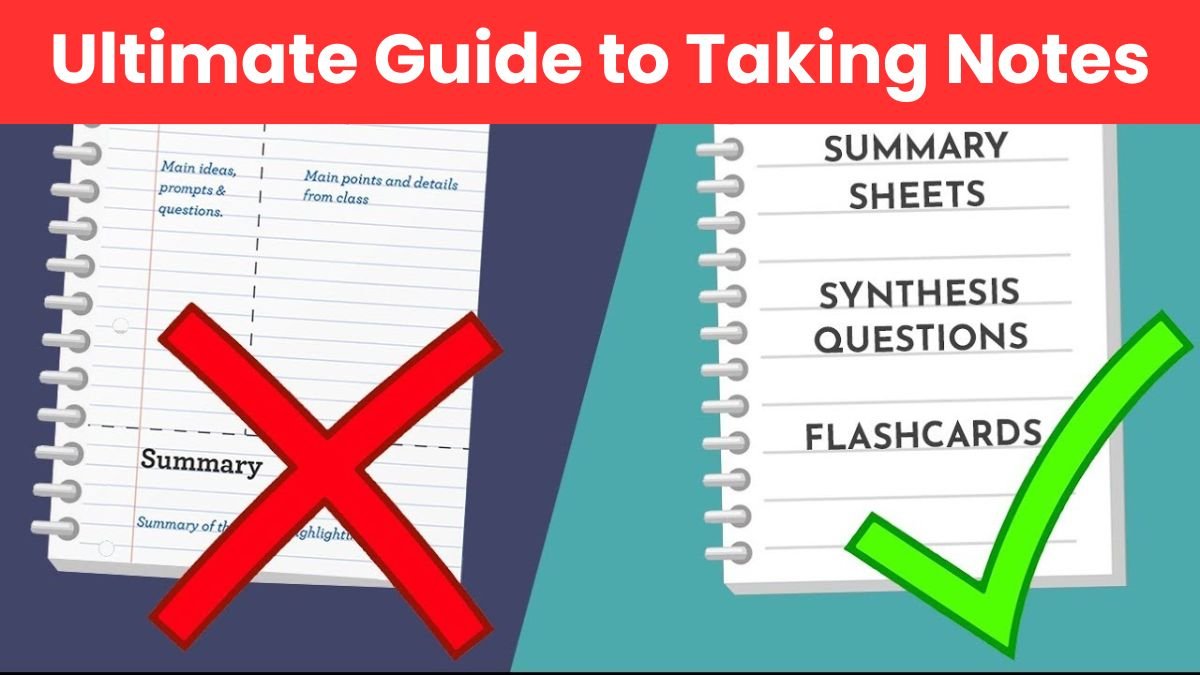Sometimes it happens that we attend class every day, but when the time for the test comes, we do not remember what we studied. Or when we open the books, we do not understand where to start. If you have ever been in this situation, then do not worry – you are not alone.
In fact, taking good notes is a skill that every student should know. It not only makes your studies easier, but is also very useful in preparing for exams. In this guide, we will tell you how to take good notes in class, what methods to adopt, and why this habit can change your world of studies.
Why are notes important?
Many students think that just listening carefully in class or reading a book is enough, but in reality taking notes is an active learning process. When you write yourself, the brain is more active and things are remembered for a long time.
Let us understand how good notes help:
- Factors Influencing WA: It is the general belief that if you write something in your own language, it becomes clearer and more accurate.
- Wonderful Mnemonic: The act of writing will ensure the retention of that knowledge in your mind for a longer period. You understand quickly when you read them again.
- Helps in connecting ideas: When you make notes by connecting topics, big things seem small and easy.
- Easy to prepare for tests: Before the test, all the topics are available in one place. There is no need to flip through the book again and again.
Best ways to take notes
Now the question comes – how to take notes? Everyone has a different method, but there are some popular and easy methods that help most of the children.
1. Cornell Method: The art of organized notes
This method is based on dividing the page into three sections:
- Left side (Cue Section): Here you write keywords or short questions.
- Right side (Notes Section): Write down all the main points told in the class.
- Bottom (Summary Section): Write down a small summary of whatever you learned after the class.
Example: If photosynthesis of plants is explained in the class, then write the process in Notes, “How does photosynthesis happen?” in Cue and “Plants make food from sunlight” in Summary.
2. Mind Mapping: Visual method
If you are a student who understands visual things more, then mind mapping is great.
- Write the main topic in the middle, like “Freedom Struggle”
- Then make branches of sub-topics around it – like the Revolution of 1857, Gandhiji, Bhagat Singh, etc.
- Keep adding more small points from each branch.
Mind map shows you the whole picture at once.
3. Outline Method: Information in points
This is the simplest and classic method. In this, you write the main points and sub-points through bullets or numbering.
- Main topic
- Sub-point 1
- Sub-point 2
- Example of that
This method is especially good for lecture based classes.
Active listening: Not only writing, but understanding is also important
Many times students just listen and keep writing, but later they do not understand what was written. That is why active listening is important.
- Catch the main points: When the teacher says “pay attention to this” or “this is the main point”, then understand that it is important.
- Note what is being written on the board: If a word or definition is coming repeatedly, then it is important.
- Do not be afraid to ask questions: If any point is not clear, then ask immediately. This will improve your understanding.
Use shortcuts and symbols
Writing everything in full is a waste of time. So make your own short forms:
- w/ = with
- b/c = because
- → = result
- ★ = important point
- ? = to read again
These tricks will help you take notes faster.
Revise notes after class
Your notes are useful only if you revise them. It is very beneficial to revisit notes within 24 hours of class.
- Write a short summary at the bottom of each page.
- If something is left incomplete, add it after class.
- Highlight important points.
Just 15-20 minutes of revision every day makes your memory strong.
How to organize notes?
Now it’s just a question of saving these notes in a place where you will always be able to search them quickly when needed.
- Maintain different notebooks or folders for every subject.
- Lets add colors-blue for Hindi, green for science.
- Prefer digital notes? Try apps like Notion or OneNote.
Tips to supercharge your notes
- Active recall: After reading the notes, try to memorise them with your eyes closed.
- Write in your own language: Write what you have understood in your own words.
- Leave space: Keep some blank space on each page so that you can add more things later.
Common mistakes to avoid
- Trying to write everything down: Don’t do this. Just write the main points, otherwise the entire lecture will be missed.
- Don’t re-read notes: Just writing is not enough. If you don’t revise, you won’t get any benefit.
- Writing without structure: If the notes are haphazard, it will be difficult to understand when you re-read them.
Conclusion: Start taking better notes from today
Taking notes is not rocket science. This is just a habit that you can gradually improve. Select the technique apt for you, listen to your daily classes, and, every day, even if it is for one hour or less, revise your notes.
A right note-taking strategy is not universal. Find one that best suits you. This much is certain, good notes can lighten your study stress and provide much-needed relief during the exams.
So are you ready to take your notes to the next level? Start today – the first step towards becoming a better student!









